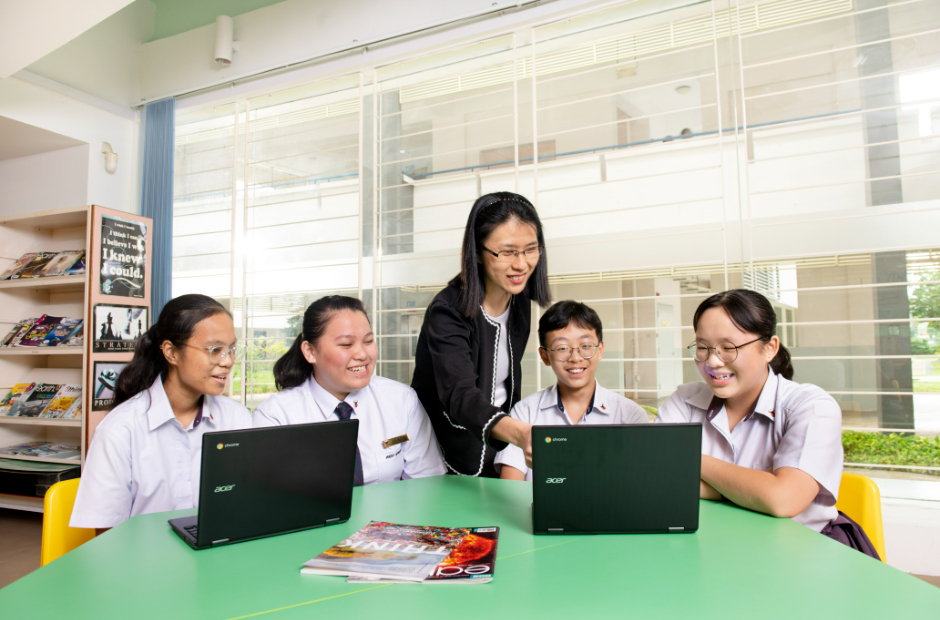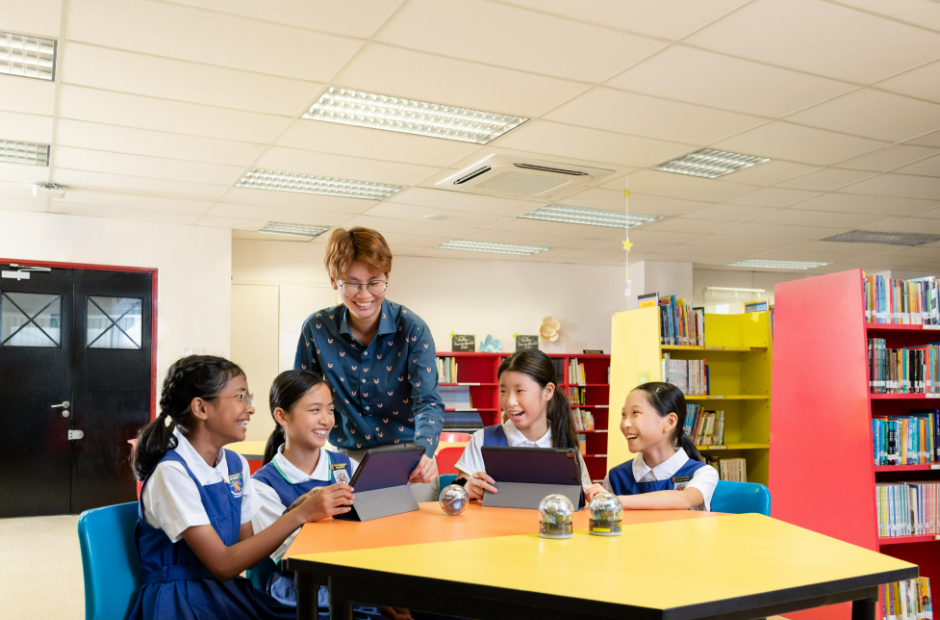A teaching win for me is… when my students start to see that success is within their reach.
When I first met Primary 4 student Amanda (not her real name), she was unmotivated in completing her work and would often give up without trying. I sought to better understand the situation and find a way to help her.
During our conversation, she shared that she found schoolwork too difficult and she felt frustrated and helpless. Instead of trying her best to complete her homework, she often chose to leave the questions blank.
I explained to her about the growth mindset, where our effort and attitude towards learning count for everything. Aside from guiding her weekly in her homework, I encouraged her to approach her teachers for help whenever she faced difficulties. Over time, her teachers and I saw improvement in the quality of her homework, and she speaks up in class too.
The steps I have taken to help students like Amanda are part of the school’s H.O.P.E. (“Halt the action, Probe the Action, Prompt Reflections, and Empower Students”) Restorative Practice framework. I find great satisfaction in equipping our students with the skills they need to be empowered learners.
An effective teaching tool for me is… using EdTech to create more imaginative lessons.
“Can you identify which Brawl Stars character shows that the fraction ¼ is shaded: Spike, Piper, Colt or Brock?”
This question was posed to my Primary 3 students using concept cartoons. The use of familiar characters, coupled with subject-based content through such visuals, has made learning more interesting for my students, and helps them to retain information better.
I also incorporate EdTech tools such as ChatGPT, Play.ht, Canva and Craiyon into my lessons in SLS to create escape-room-themed games. The use of these tools has allowed me to stimulate my students’ thinking and deepen their understanding of concepts taught in class. This has also helped to improve my students’ engagement in the classroom.
I believe that all students can learn, just not in the same way. To encourage self-directed learning among my students, I upload educational learning videos, reference materials and study resources on my Class Google Site. My students have shared that they find this useful during self-revision.
A project I find meaningful is… my school’s STEM Applied Learning Programme.
It happened during one of my Mathematics lessons. My Primary 4 students were creating a line graph to represent the school’s monthly electricity usage. They were surprised at how high the costs were. “We ought to switch off the lights and fans when not in use,” one student exclaimed. “We should conserve electricity and encourage others to do the same, so that we can save energy and help to fight climate change.”
Her words reaffirmed my stance to constantly seek opportunities to integrate STEM skills and knowledge into the curriculum. This is important as I lead the Primary 5 efforts for Green Markers @ Dazhong, the school’s Applied Learning Programme with the aim to educate our students on environmental sustainability.
When those Primary 4 students progressed to Primary 5 the following year, I leveraged their curiosity demonstrated during Maths class, and encouraged them to design and construct prototypes to solve issues relating to energy conservation. The students applied their prior knowledge of coding and created smart green prototypes using LEGO Education Spike Prime for homes to conserve resources like water and energy.
Three of the students formed a team to participate in the South Zone Inspire Competition. They went on to garner the Best Project Team (Clean Energy) Award with their prototype, The Grabber Hand 2.0, a car with solar panels to convert light energy to electrical energy.
Guiding the students to develop environmentally sustainable solutions was no easy feat, but I am incredibly proud to see their personal growth and commitment towards environmental sustainability.







